 |
 |
 |
| |
Pharmacokinetics and pharmacodynamics of etravirine in treatment-experienced HIV-1-infected patients: pooled 48-week results of DUET-1 and DUET-2
|
| |
| |
Reported by Jules Levin
ICAAC/IDSA Oct 28 2008 Wash DC
Thomas N Kakuda,1 Monika Peeters,2 Chris Corbett,2 Goedele De Smedt,2 Rekha Sinha,2 Lorant Leopold,1 Johan Vingerhoets,2 Brian J Woodfall,2 Richard MW Hoetelmans2
1Tibotec Inc., Yardley, PA, USA; 2Tibotec BVBA, Mechelen, Belgium
AUTHOR CONCLUSIONS
ETR 200mg bid demonstrated superior activity than placebo in this treatment-experienced patient population
Moderate-to-high inter and intrapatient variability in ETR pharmacokinetics
-- ETR pharmacokinetics do not vary by sex, age or race
-- changes in ETR pharmacokinetics due to TDF or hepatitis co-infection are not clinically relevant
ETR AUC12h or C0h was not associated with viral load <50 copies/mL at Week 48
-- prognostic factors retained in the final model (baseline CD4 cell count, baseline viral load, use of active agents,6 adherence, age and FC to DRV and ETR) are more important determinants than pharmacokinetics
No apparent relationships were seen between pharmacokinetics and adverse events or laboratory changes
-- rash does not appear to be related to ETR AUC12h
ABSTRACT
Background
Etravirine (ETR; TMC125) is a next-generation NNRTI with potent activity against both wild-type and NNRTI-resistant HIV. DUET-1 and DUET-2 are identically designed, ongoing, Phase III, doubleblind, randomized trials of ETR versus placebo, both with an investigator-selected background regimen (BR) including
ritonavir-boosted darunavir (DRV/r). The relationship between ETR pharmacokinetics and pharmacodynamics over 48 weeks from these trials was investigated.
Methods
Population pharmacokinetics for area under the plasma concentration-time curve (AUC) and predose plasma concentration (C0h) were estimated using Bayesian feedback. Analysis of covariance (ANCOVA) and logistic regression with generalized additive modeling (GAM) were used to analyze pharmacokinetic/pharmacodynamic (PK/PD) relationships with efficacy endpoints and safety.
Results
Of the 1203 patients enrolled, 599 were randomized to ETR, and PK data from 575 were available. Mean (standard deviation [SD]) ETR AUC and C0h were 5506 (4710) ng⋅h/mL and 393 (391) ng/mL, respectively. In the GAM analysis, ETR AUC or C0h was not significantly associated with reaching viral load <50 copies/mL at Week 48. Other factors, including baseline viral load and CD4 cell count, phenotypic sensitivity score (PSS), adherence, baseline fold-change in EC50 (FC) to DRV and ETR, age and use of enfuvirtide (ENF) or tenofovir (TDF), were more important determinants than pharmacokinetics. Antiviral activity of ETR was observed in patients with PSS=0 irrespective of pharmacokinetics. No apparent relationships were seen between ETR pharmacokinetics and laboratory changes or adverse events, including rash.
Conclusions
ETR demonstrated superior activity compared with placebo in the DUET trials at Week 48. Achieving viral load <50 copies/mL at Week 48 in these trials was not influenced by ETR pharmacokinetics, but rather by other drug-, disease- and patient-related factors. Furthermore, no relationship between ETR pharmacokinetics and safety was observed.
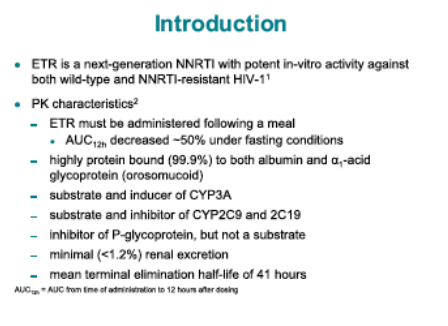
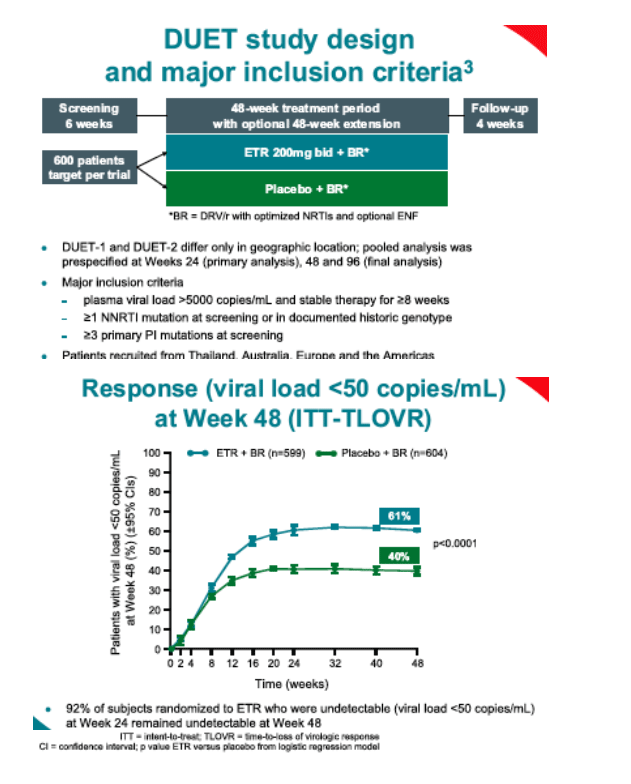
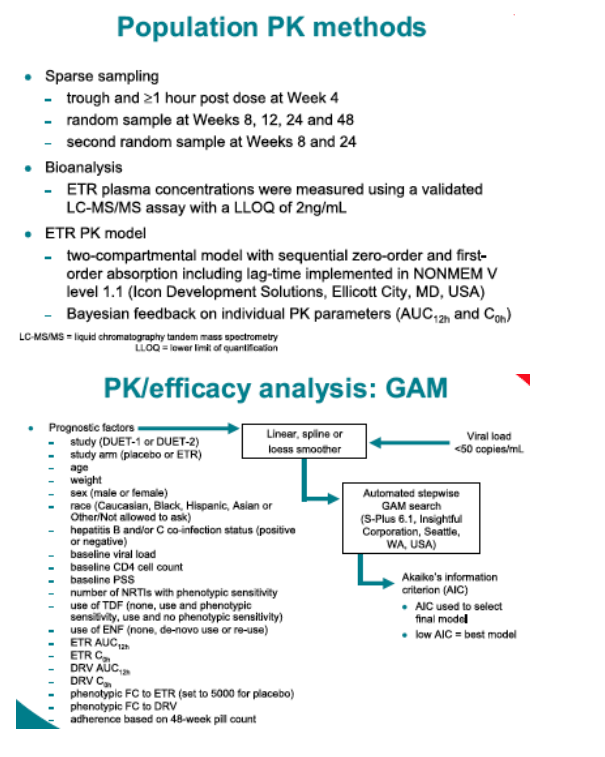
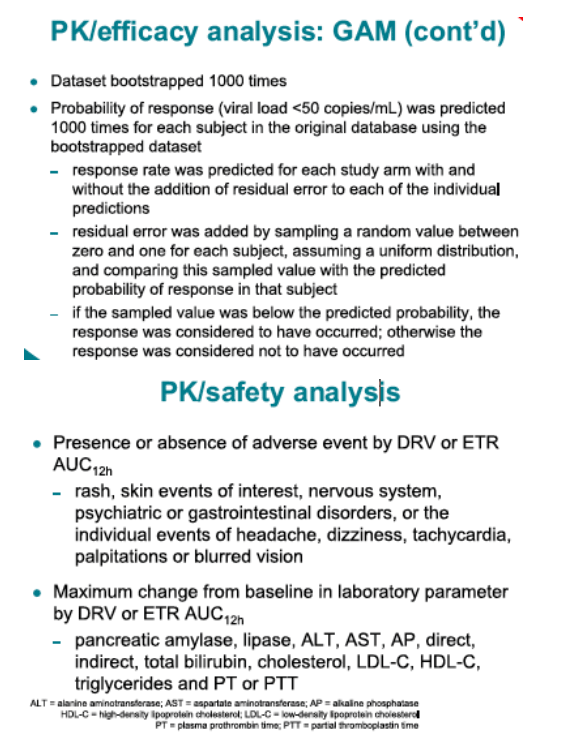
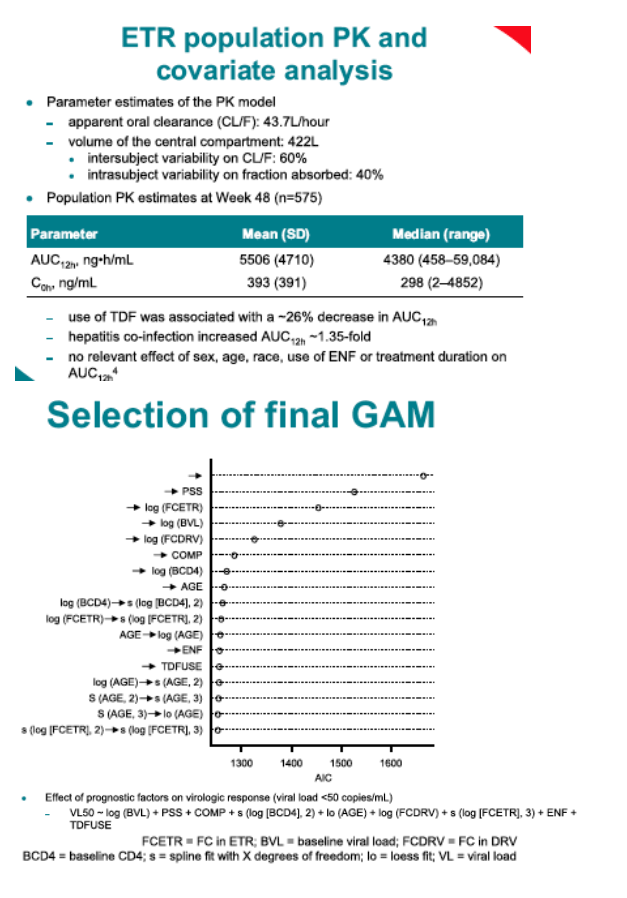
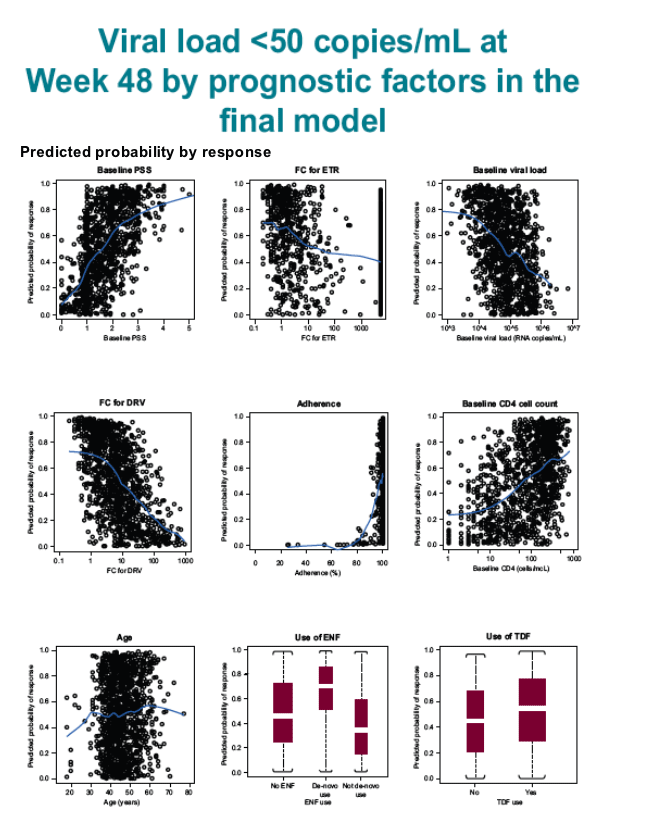
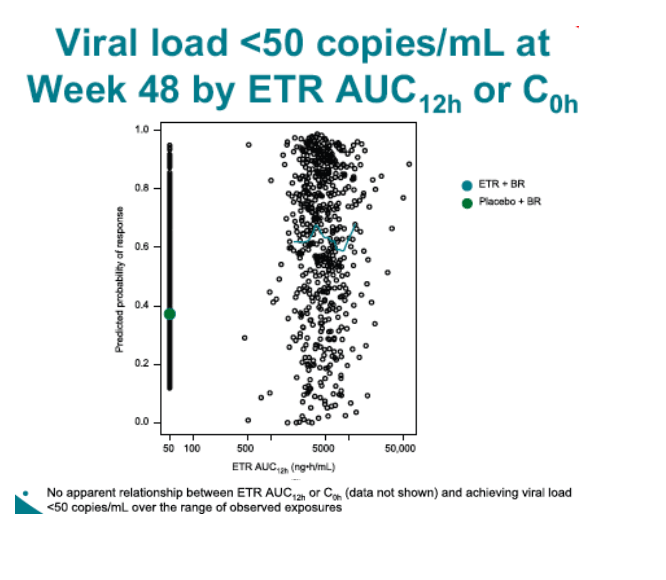
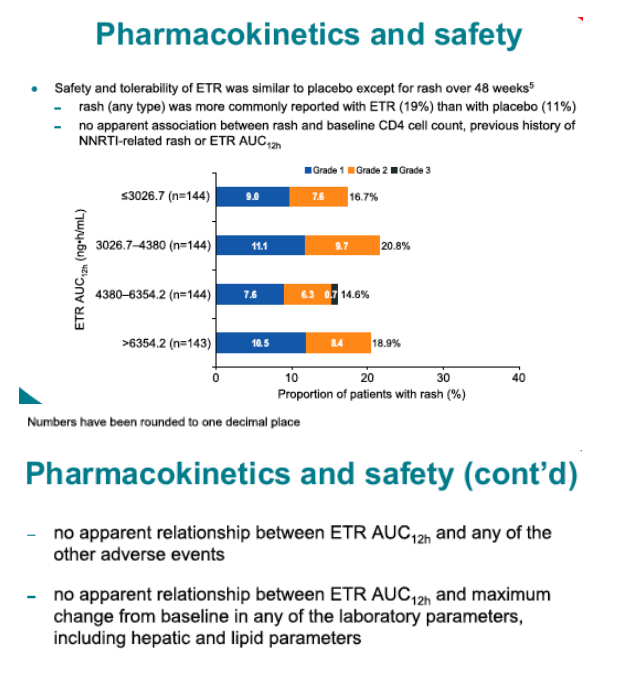
REFERENCES
1. Vingerhoets J, et al. J Virol 2005;79:12773-82.
2. Scholler-Gyu_re M, et al. Clin Pharmacokinet. Manuscript submitted.
3. Cahn P, et al. XVIIth International AIDS Conference 2008. Abstract TUPE0047.
4. Kakuda TN, et al. XVIIth International AIDS Conference 2008. Abstract TUPE0082.
5. Mills A, et al. XVIIth International AIDS Conference 2008. Abstract TUPE0059.
6. Di Perri G, et al. XVIIth International AIDS Conference 2008. Abstract TUPE0061.
|
| |
|
 |
 |
|
|